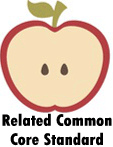How to Find the Differences between Two Stories?
There are several short stories for the cognitive development of young children. All these stories are fun and interesting for children. However, it is important that children also learn how to differentiate between these stories. Here are some ways to differentiate between two stories.
Compare the Plots
Each story has its own unique plot with a different chain of events. This different and unique chain of events makes the story fun and interesting. Whenever you are given the task to find the differences between two different stories, start comparing the plots first. This is because the plots of stories always differ from one another. Some plots are about fighting with the villain while other plots are about fighting natural disasters. There are so many variations out there. You can take any two stories and their plots will be different. It is best to start differentiating with plots. You can mention what circumstances are faced by the protagonist in both the stories. You can also discuss the main issues of the stories and how they differ from each other. What elements separate both plots?
Compare the Characters
Another way to differentiate between two stories is to differentiate the characters of the story. For example, one story might have a male as the leading protagonist while the other might have a female in lead. You can also distinguish between the characters by examining them closely. Pay attention to how the characters respond to certain situations, how do they walk and converse, what is their attire, etc. All these elements will help you in getting to know the character more and how it differs from the character in the other story.
Compare the Writing Style
Some children stories are written in a narrative form while others are not. You can also find the differences by looking at the writing style the writer picked.
How Do You Compare And Contrast Texts?
The ability to compare and contrast is a first high-order comprehension skill which links to early life cognitive skills. When you find similarities in two different texts it means you are comparing the texts while when you highlight the differences in the same text, this is called contrast. A text should be able to do both in order to be called a compare and contrast. It should portray the similarities and differences in order for the text to be understood better. The focus and attention to detail required in reading a compare and contrast text helps individual to organize and retain information and develop better writing expressions.
There are several ways to compare and contrast texts. For comparisons you may look for the type or form of text for example, it could be an article, blog or letter. The purpose it is written for or the audience it is addressing is another way to compare. Some texts are written just to inform or advice while others persuade and entertain.
Identifying the subject is another way you can compare and contrast texts. The subject will give an insight into what the text is about or the main focus of the writer. Whether the text is written from a child's perspective or an adult perspective is another way to compare. The writer can also choose to write the text from a first-person or third-person perspective which will, in turn, affect the writing style. The style of language, literary techniques, and the choice and connotation of words used in two different texts can also depict how the writer's methods are similar and different. The tone that is used to communicate ideas and the structure of the text all help to compare and contrast texts.

